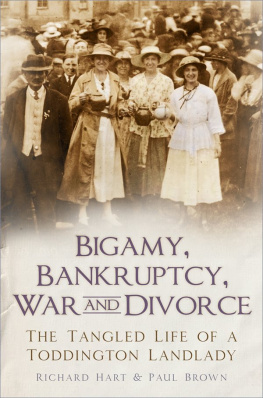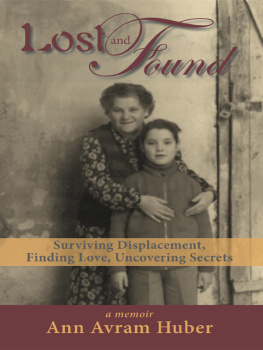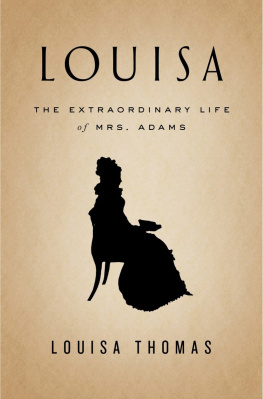Contents
Guide


First published 2019
The History Press
97 St Georges Place, Cheltenham,
Gloucestershire, GL50 3QB
www.thehistorypress.co.uk
Richard Hart and Paul Brown, 2019
The right of Richard Hart and Paul Brown to be identified as the Author of this work has been asserted in accordance with the Copyright, Designs and Patents Act 1988.
All rights reserved. No part of this book may be reprinted or reproduced or utilised in any form or by any electronic, mechanical or other means, now known or hereafter invented, including photocopying and recording, or in any information storage or retrieval system, without the permission in writing from the Publishers.
British Library Cataloguing in Publication Data.
A catalogue record for this book is available from the British Library.
ISBN 978 0 7509 9184 1
Typesetting and origination by The History Press
Printed and bound in Great Britain by TJ International Ltd.
eBook converted by Geethik Technologies

CONTENTS

Helens family tree shows her parents, brothers and sisters, three marriages and her children. Edward Randells date of death remains a mystery, although he was officially declared dead on 27 May 1947. He disappeared in 1900 and may well have lived a full life under an assumed name. The date of death of Edwards daughter Irene (known as Bob), who he probably never knew existed, also remains a mystery. However, Bob did come to England to visit her mother after she had moved to Germany.
FOREWORD
The love letters of a Toddington landlady only survived because a bank inspector could not bear to throw them away. He found them in a box in a safe in the 1970s, where they had been since they were deposited some time during the First World War. The branch had lost touch with the depositor and so the inspector took the letters home, making notes from the contents with a view to tracking down the owner. He was unsuccessful and they remained in his loft for nearly forty years until he read the book on the history of Lloyds published on the banks 250th anniversary, and noticed that the author, Richard Hart, came from Toddington. He had found a new home for the letters and passed them on.
With the help of modern technology, and the superb abilities and tenacity of researcher Delia Gleave, the story of Helen Nelson has been pieced together. Helen had a full life and enjoyed many adventures before she was consumed by a deep passion for James Norbury Franklin-Smith, following a chance encounter at a Leighton Buzzard horse show. The letters tell the story of their early relationship.
The bank inspector prefers to remain anonymous but we need to thank him and other members of the Leighton Buzzard Archaeological and Historical Society besides Delia who contributed to compiling this book. Chief among them is Jill Jones, who faithfully transcribed the letters, a daunting task. She was surprised and amused at some of Helens more risqu asides.
We have also had help from Chris Goddard in chasing down military details and obtaining photographs, and the Western Front Association for background on the Salonika campaign. The Dover Society and the Bedfordshire Archives and Record Service have also been helpful in providing material, as has Maureen Brown, the Societys historical research officer.
Lastly, thanks again to Delia, we managed to track down Helens descendants, Tracey Queen and Stuart Pierce. It is fair to say that they were both astonished and delighted to hear of their grandmothers colourful past and we thank them for their help and encouragement to publish Helens letters and record her life.
INTRODUCTION
A bundle of passionate but unclaimed love letters written a century ago and found in a London bank vault have led to the uncovering of an extraordinary story.
Research has revealed the adventures of a spirited young woman who by the standards of the time, or perhaps any time, behaved scandalously. Yet she managed to avoid disgrace, get her man, and go on to lead a respectable life.
Ellen, or Helen as she (and we) later called herself, Nelsons behaviour appears shocking on paper. Among other misdeeds, she appears to have been bigamously married, twice. Given her circumstances, however, her survival is a triumph of fortitude over betrayal.
Nothing in her background would suggest the colourful life she would later lead. Ellen was a Bedfordshire policemans daughter. She was born in 1880 in Marston Moretaine where her father, Isaac, was stationed as the local policeman. He originally came from Cumberland but seems to have settled in Bedfordshire, where he held the post of constable in several of the countys villages.
The 1881 census shows that he and Ellens mother, Catherine, aged 34, already had four children three daughters and a son by the time Ellen came along. The two eldest children had been born in nearby Lidlington, where Isaac had previously been stationed.

The King William IV public house at 36 High Street, Kempston, where Helen Nelson grew up. She was 13 when her father Isaac took over the pub. This is one of the oldest buildings in the town and little has changed since Isaac retired from the police force and became a publican in 1893.
Ten years later Isaac had moved on again and he and his family were living at the police house in Ampthill Road, Westoning, but shortly afterwards, at the age of 44, he retired from the police force and became a publican. At the time this was a common career progression for policemen, who were welcomed by magistrates because they were well able to keep order when their customers became rowdy.
In 1893 Isaac became landlord of a flourishing establishment, the King William IV at Kempston, now a suburb of Bedford. The building, which dates from about 1600, had been a public house since about 1830, when the first licensees are recorded. It was quite large and had a quoits court in the garden and a separate building with a billiard table.
Downstairs the pub had a taproom, bar, cellar, smoke room, kitchen, and scullery. Upstairs there was plenty of room for the family, with four bedrooms, a box room and a WC, and outside there was stabling for five horses.

The interior of the King William IV in 2018. Helens experience in helping her family run such a large and busy establishment came in useful later in life when she took on The Sow and Pigs at Toddington.
In Victorian days better quality public houses were used for all sorts of purposes. Isaac was clearly regarded as a pillar of the community because in August 1893 he was sworn in as a member of the jury at an inquest held at his pub.

















